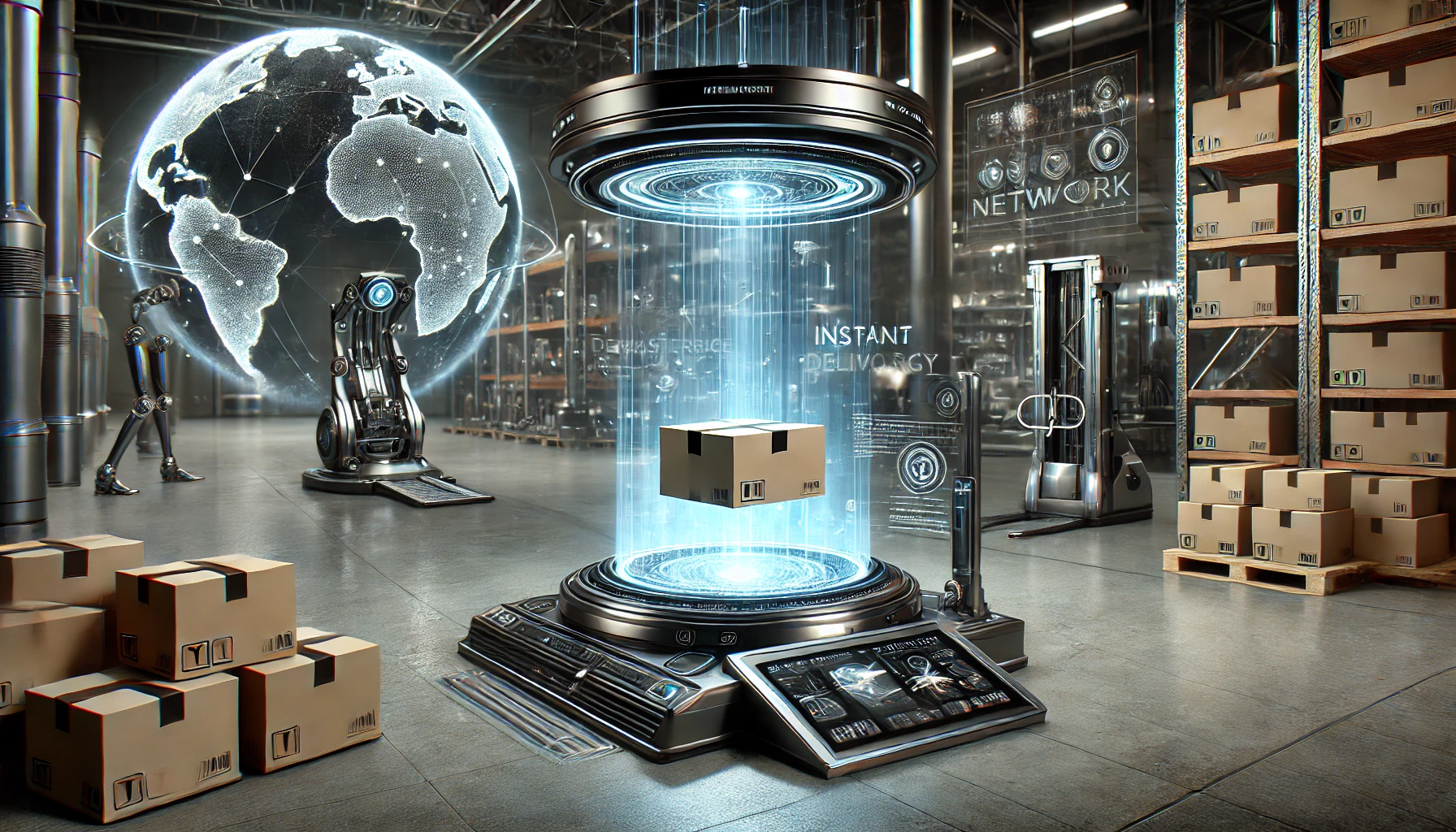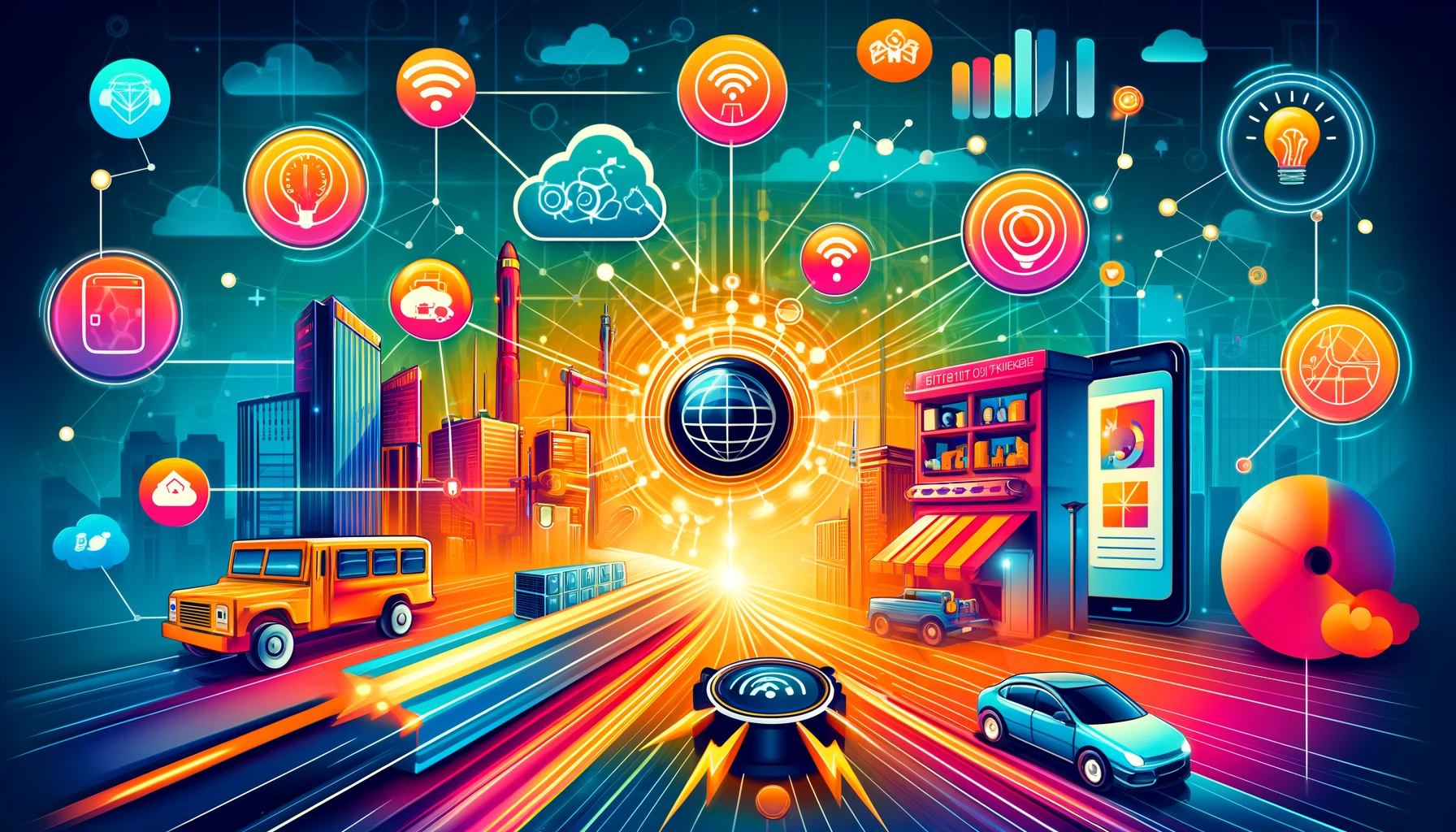Picture a world where goods can be transported instantly from one location to another, completely bypassing traditional shipping methods involving trucks, planes, and ships. This extraordinary concept, often depicted in science fiction classics like Star Trek, is known as teleportation. Although purely speculative at this point, the potential impact of teleportation on retail logistics could be nothing short of revolutionary, transforming global commerce as we know it.
Understanding Teleportation
Teleportation, in the realm of science fiction, involves dematerializing an object at one location and reassembling it instantaneously at another. In Star Trek, this is achieved using devices known as “transporters.” While real-world physics and technology have yet to make teleportation a reality, ongoing advancements in quantum mechanics and other fields keep the idea tantalizingly within the realm of scientific speculation.
Potential Benefits for Retail Logistics
Elimination of Shipping Times
One of the most compelling advantages of teleportation would be the elimination of shipping times. Currently, goods must travel through complex networks involving warehouses, distribution centers, and various modes of transportation. Teleportation would enable instantaneous delivery, allowing retailers to meet customer demands faster than ever before. Imagine ordering a product online and having it appear at your doorstep within moments—a true revolution in convenience and efficiency.
Reduction in Transportation Costs
Traditional transportation involves significant costs, including fuel, labor, and maintenance. Teleportation could drastically reduce or even eliminate these expenses. Retailers would no longer need to invest in large fleets of vehicles or manage extensive supply chain logistics. This cost reduction could lead to lower prices for consumers and higher profit margins for businesses. Additionally, savings from reduced warehousing and inventory management expenses would further boost financial benefits for retailers.
Enhanced Global Commerce
Teleportation would make global commerce more efficient by removing geographical barriers. Products could be transported instantly from manufacturers to consumers, regardless of distance. This would open up new markets for retailers and allow consumers to access a wider range of products from around the world. For instance, a consumer in a remote village could order specialty goods from another continent and receive them immediately, fostering a truly global marketplace.
Environmental Impact
The transportation industry is a significant contributor to carbon emissions and environmental degradation. By eliminating the need for traditional shipping methods, teleportation could significantly reduce the carbon footprint of retail logistics, contributing to a more sustainable future. The reduction in emissions from freight transport, packaging waste, and energy consumption associated with conventional logistics would make a substantial positive impact on the environment.
Challenges and Considerations
While the benefits of teleportation are compelling, several challenges and considerations must be addressed:
Technological Feasibility
Current scientific understanding and technology are far from achieving practical teleportation. Research in quantum entanglement and other related fields is still in its infancy, and significant breakthroughs would be required to make teleportation a reality. Developing the necessary technology to safely and reliably teleport goods involves overcoming immense technical hurdles, including the precise control of quantum states and the handling of vast amounts of data.
Energy Requirements
Teleportation, if possible, would likely require enormous amounts of energy. Developing a sustainable and efficient energy source to power such technology would be crucial. The energy demands for teleportation could be vast, potentially exceeding current global energy production capabilities. Therefore, advancements in energy generation, storage, and efficiency would be essential to support the widespread use of teleportation.
Security and Privacy
Instantaneous transportation of goods would raise significant security and privacy concerns. Ensuring that teleportation technology is secure and cannot be exploited by malicious actors would be essential. The potential for intercepting or tampering with teleported goods would require robust security protocols and encryption methods to protect the integrity and confidentiality of shipments.
Regulatory and Ethical Issues
The deployment of teleportation technology would necessitate new regulatory frameworks to address issues such as intellectual property rights, customs regulations, and ethical considerations related to the transportation of living organisms. Governments and international bodies would need to develop comprehensive policies to manage the implications of teleportation on trade, privacy, and public safety. Additionally, ethical questions regarding the use of teleportation for living beings would require careful consideration and guidelines to prevent misuse.
Implementation in the Real World
Implementing teleportation in the real world would involve several key steps and stages:
1. Scientific Research and Development:
The first step would be a significant investment in scientific research and development. Governments, academic institutions, and private companies would need to collaborate on exploring the theoretical and practical aspects of teleportation. This research would focus on understanding and harnessing quantum entanglement, energy requirements, and the technical challenges of dematerializing and reassembling objects.
2. Prototype Development:
Once the theoretical groundwork is laid, the next stage would involve developing prototypes. These prototypes would initially be small-scale, focusing on teleporting simple objects over short distances. Success at this stage would pave the way for more complex and larger-scale teleportation experiments.
3. Energy Solutions:
Developing sustainable and efficient energy solutions would be crucial. This might involve advances in nuclear fusion, renewable energy sources, and innovative energy storage technologies. Ensuring that teleportation can be powered reliably and sustainably is essential for its practical application.
4. Security and Encryption:
Robust security measures would need to be developed to protect the integrity of teleported goods. This includes encryption protocols to prevent unauthorized access and tampering, as well as systems to track and verify the authenticity of teleported items.
5. Regulatory Frameworks:
Governments and international bodies would need to establish regulatory frameworks to govern the use of teleportation. This would involve setting standards for safety, privacy, and ethical considerations. Regulatory bodies would also need to address intellectual property rights and trade regulations related to teleportation.
6. Pilot Programs:
Before widespread implementation, pilot programs would be conducted to test and refine teleportation systems. These programs would involve selected retailers and logistics companies, focusing on specific use cases and scenarios. Feedback from these pilot programs would be used to improve and optimize teleportation technology.
7. Public Awareness and Acceptance:
Building public awareness and acceptance of teleportation would be essential. This involves educating the public about the benefits and safety of teleportation, addressing any concerns or misconceptions, and highlighting the potential positive impact on the environment and global commerce.
8. Full-Scale Deployment:
With successful pilot programs and regulatory approval, teleportation could be deployed on a larger scale. Retailers and logistics companies would integrate teleportation into their supply chains, revolutionizing the way goods are transported and delivered.
The concept of teleportation of goods, while currently speculative and highly futuristic, holds the potential to revolutionize retail logistics. By eliminating shipping times, reducing transportation costs, enhancing global commerce, and mitigating environmental impact, teleportation could transform the way we conduct global commerce. However, significant technological, energy, security, and regulatory challenges must be overcome to turn this science fiction dream into a reality. As research progresses, the possibility of teleportation continues to inspire and challenge our understanding of what is possible in the future of retail logistics. The journey to achieving practical teleportation may be long and complex, but the potential rewards make it a captivating and worthwhile pursuit.



